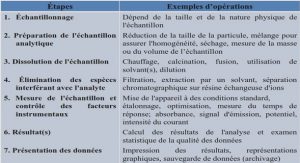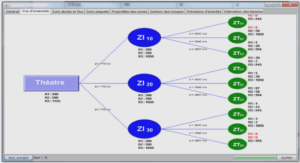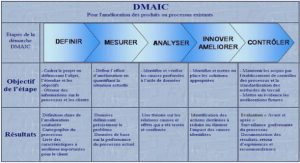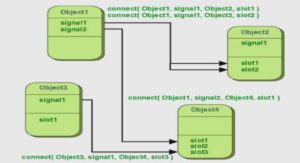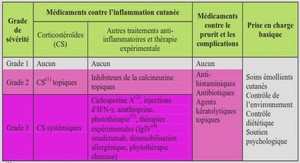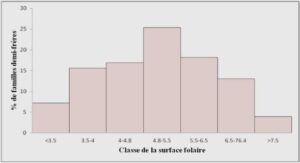Perception directe d’intention sociale depuis les actions motrices
À travers les études 1 et 2, un pattern spécifique de variations cinématiques a été retrouvé pour les actions motrices exécutées avec une intention sociale par comparaison à celles effectuées pour soi-même. Ainsi, lorsqu’une action est réalisée pour autrui, on observe une exagération de ses caractéristiques spatio-temporelles : elle est produite plus lentement et suit des trajectoires davantage courbées. Puisque ces variations cinématiques sont associées à un coût énergétique non-optimal du point de vue de l’individu, nous faisons l’hypothèse que si celles-ci apparaissent de façon consistante, c’est qu’elles sont bénéfiques du point de vue des interactions sociales. Nous postulons ainsi que ces variations ont pour fonction de faciliter la réalisation d’actions impliquant plusieurs personnes. En percevant implicitement des informations relatives à l’intention sociale poursuivie par un individu, il serait possible pour un observateur d’anticiper les actions à venir et ainsi de réaliser une réponse motrice adaptée. Afin de tester cette hypothèse, nous avons conduit une troisième étude sur des participants recrutés par binômes. Les participants venaient par deux au laboratoire et se voyaient aléatoirement attribuer les rôles d’Acteur et de Partenaire (voir description du dispositif expérimental, dans le préambule de cette partie du manuscrit). Cette fois, les signaux sonores déclenchant les différentes actions de la séquence étaient délivrés à l’aide de casques audio, ce qui permettait de transmettre des informations différentes à l’Acteur et au Partenaire. Les sons déclenchant la production de l’Action préparatoire chez l’Acteur pouvaient l’informer de la personne qui allait devoir réaliser la prochaine Action principale (« Moi », « Lui ») ou ne donner aucune information (« Prêt »). Le Partenaire ne recevait lui que des sons non- Perception directe d’intention sociale depuis les actions motrices 144 informatifs (« Prêt »). À nouveau, nous nous attendons à observer un effet de l’intention sociale sur la cinématique des mouvements de l’Action préparatoire de l’Acteur. De plus, cette fois, nous nous attendons à ce que les Partenaires soient facilités dans la production des Actions principales lorsque l’Acteur a réalisé l’Action préparatoire en poursuivant une intention sociale (condition « Lui ») plutôt que lorsque l’Acteur n’a pas d’information (« Prêt »).
Facilitation effect of observed motor deviants in a cooperative motor task
Evidence for direct perception of social intention in action Abstract Spatio-temporal parameters of voluntary motor action may help optimize human social interactions. Yet it is unknown whether individuals performing a cooperative task spontaneously perceive subtly informative social cues emerging through voluntary actions. In the present study, an auditory cue was provided through headphones to an Actor and a Partner who faced each other. Depending on the pitch of the auditory cue, either the Actor or the Partner were required to grasp and move a wooden dowel under time constraints from a central to a lateral position. Before this main action, the Actor performed a preparatory action under no time constraint, consisting in placing the wooden dowel on the central location when receiving either a neutral (« prêt »-ready) or an informative auditory cue relative to who will be asked to perform the main action (the Actor: « moi »-me, or the Partner: « lui »-him). Although the task focused on the main action, analysis of motor performances revealed that Actors performed the preparatory action with longer reaction times and higher trajectories when informed that the Partner would be performing the main action. In this same condition, Partners executed the main actions with shorter reaction times and lower velocities, despite having received no previous informative cues. These results demonstrate that the mere 146 observation of socially driven motor actions spontaneously influences the low-level kinematics of voluntary motor actions performed by the observer during a cooperative motor task. These findings indicate that social intention can be anticipated from the mere observation of action patterns.
Introduction
Optimal control models of biological movements are used to account for the external and internal variables that constrain voluntary goal-directed actions (Shadmehr & MussaIvaldi, 1994) and contribute to adaptation of human behaviour in the vast diversity of situations normally encountered (Van Beers, Haggard & Wolpert, 2004). Currently, these models have difficulty in accounting for higher levels of action control, in particular with respect to motor and social intentions (e.g., Grafton & Hamilton, 2007). As pointed out by Jacob and Jeannerod (2005), motor intention refers to the intended effects of a goal directed action in the environment, and thus represents one category of internal variables that may substantially influence the planning of voluntary actions. Marteniuk, Mackenzie, Jeannerod, Athenes & Dugas (1987) were the first to show that reach-to-grasp movements towards an object differ depending on the final goal of the grasping movement (e.g. “placing” or “throwing” the object, the former being associated with a longer deceleration phase). The effect of motor intention on spatio-temporal features of motor execution was later confirmed in various grasping tasks (Ansuini, Giosa, Turella, Altoe & Castiello, 2008; Ansuini, Santello, Massaccesi & Castiello, 2006; Naish, Reader, Houston-Price, Bremner & Holmes, 2013; Springer, Hamilton & Cross, 2012), and generalised to pointing (Chary, Méary, Orliaguet, David, Moreaud, & Kandel, 2004), writing (Orliaguet, Kandel & Boë, 1997) and communicative gesturing (Pennel, Coello & Orliaguet, 1999). It was further shown that observing the visuo-spatial variations in motor execution of a purposeful voluntary action permits detection of the motor intention long before the action is completed (Lewkowicz, Delevoye-Turrell, Bailly, Andry, & Gaussier, 2013; Méary, Chary, Palluel & Orliaguet, 2005; Springer, Hamilton & Cross, 2012) and can thus influence interactions during joint actions 148 when interacting agents share the same motor intention (Bratman, 1992; Newman-Norlund, Noordzij, Meulenbroek, & Bekkering, 2007; Herbort, Koning, van Uem & Meulenbroek, 2012). Social intention is different from motor intention in that it is grounded in interactive contexts in which other actors are needed to satisfy motor goals (Ciaramidaro et al., 2007). Social intention refers to the goal-directed action’s intended effects on the co-actor (Jacob & Jeannerod, 2005). Importantly, different social intentions may be associated with the very same motor intention, this being well illustrated by the Dr. Jekyll and Mr. Hyde paradox5 (Jacob & Jeannerod, 2005). Thus, in contrast to motor intentions, social intentions have been thought to be undetectable by observation of the kinematic parameters of voluntary motor actions (Jacob, 2013; Jeannerod, 2006). Recent studies have suggested, to the contrary, that social context may influence the performance of voluntary motor actions (Scorolli, Miatton, Wheaton & Borghi, 2014; Quesque, Lewkowicz, Delevoye-Turell & Coello, 2013). For instance, acting in the presence of a confederate influences the kinematic pattern of motor responses, and the extent of this effect depends on the distance between the actor and the confederate (Gianelli, Scorolli, & Borghi, 2013; Quesque et al., 2013). Furthermore, the spatio-temporal features of a grasping.
